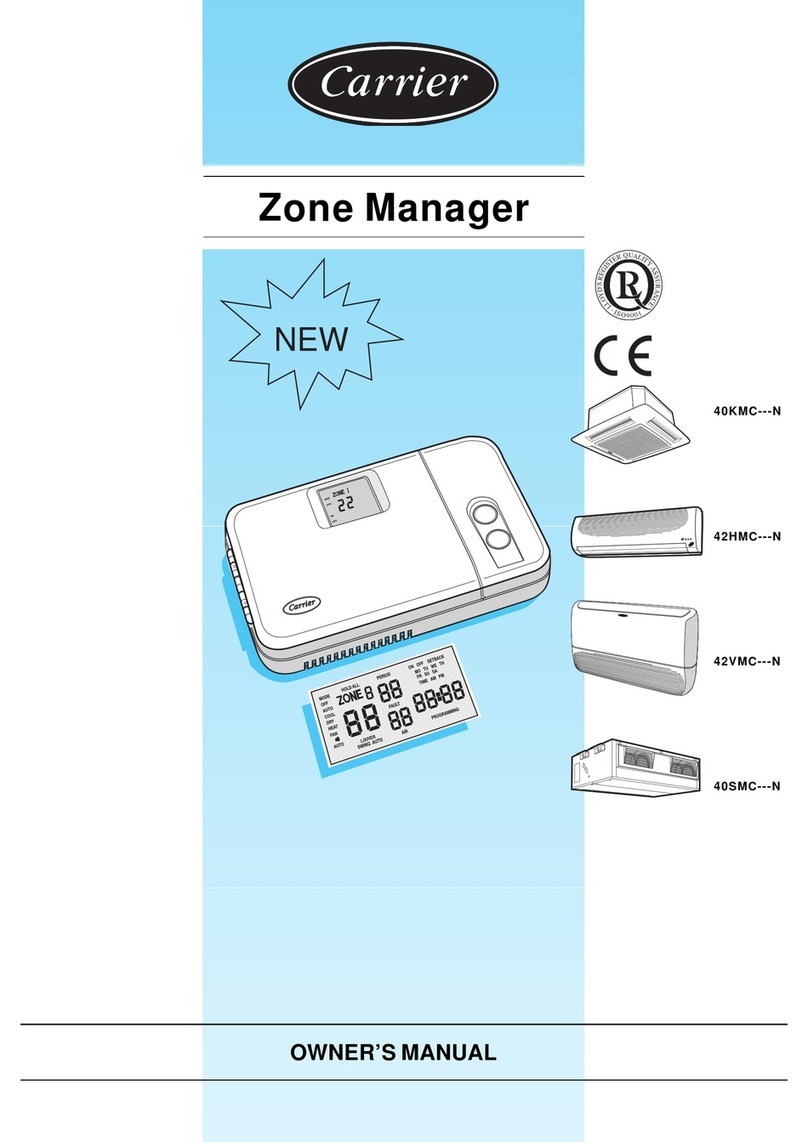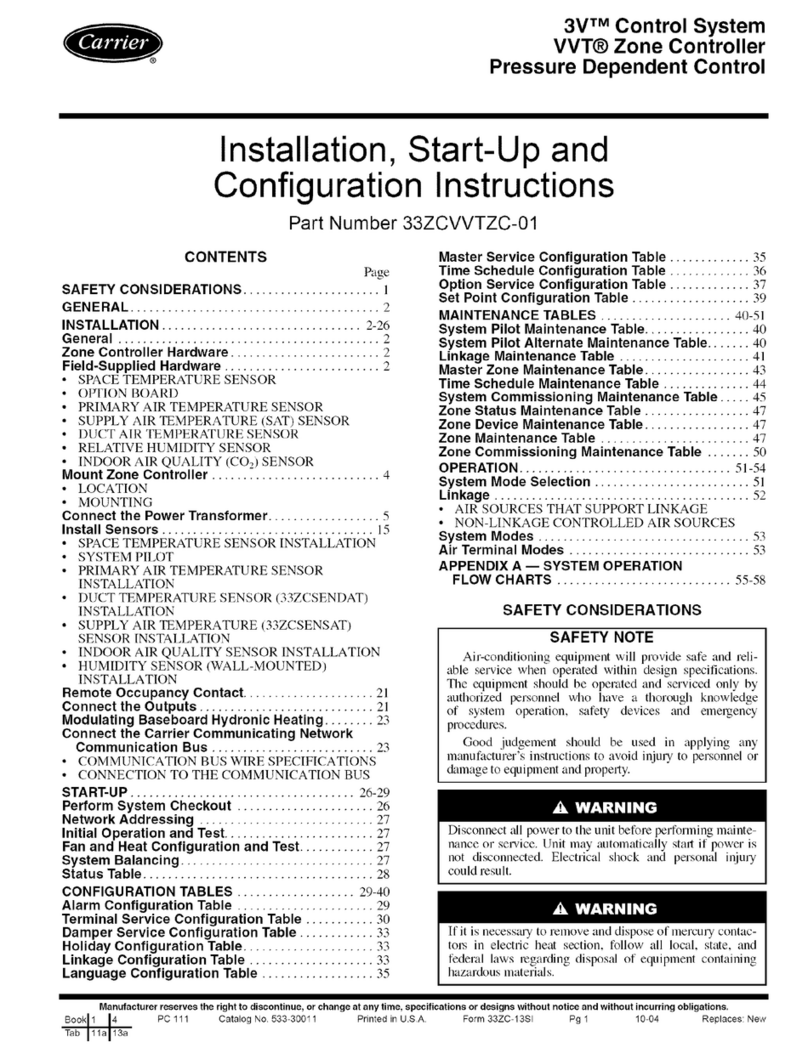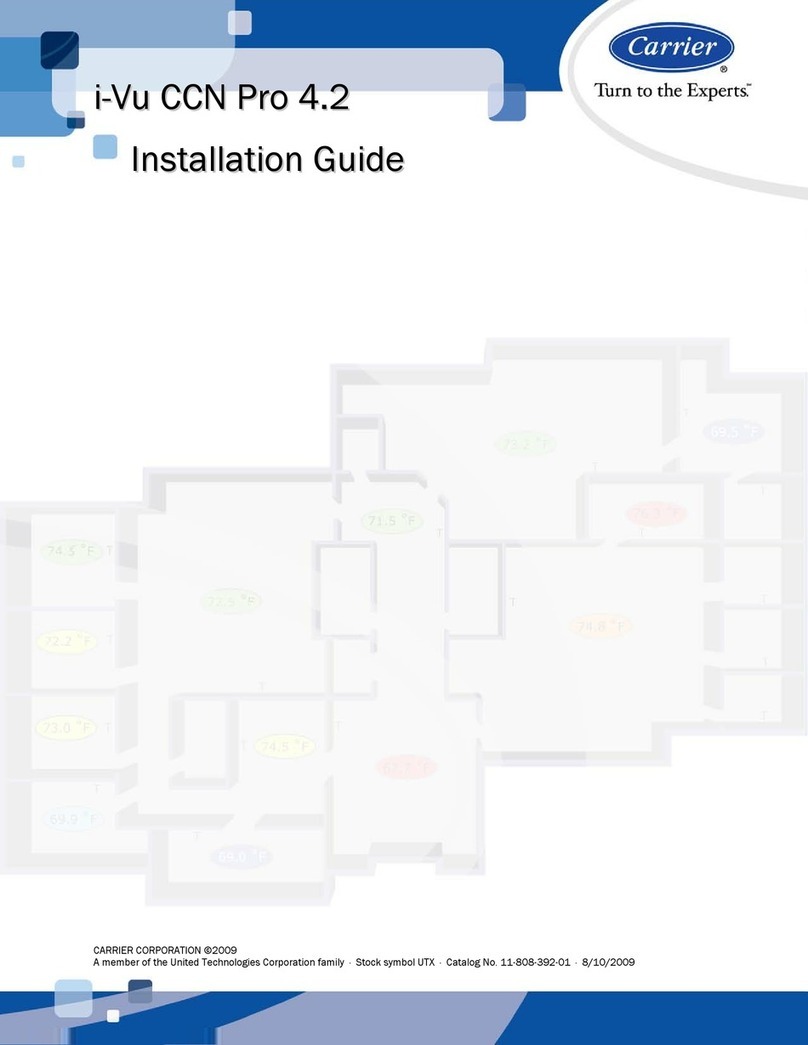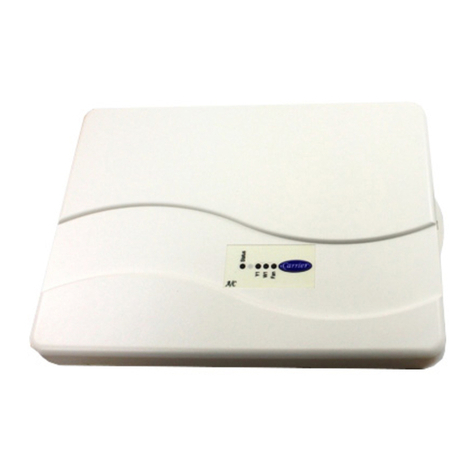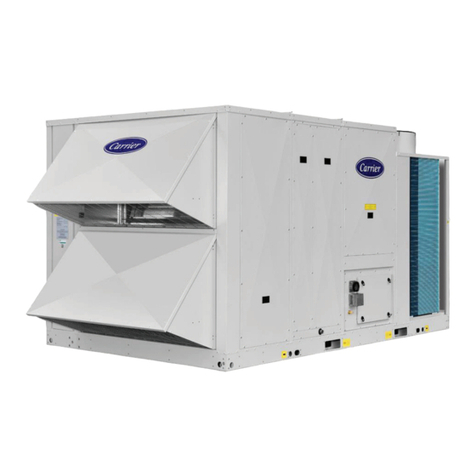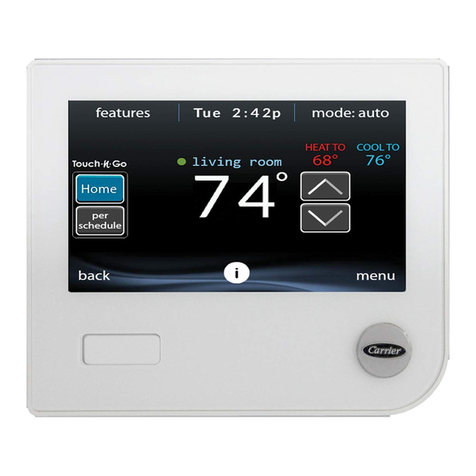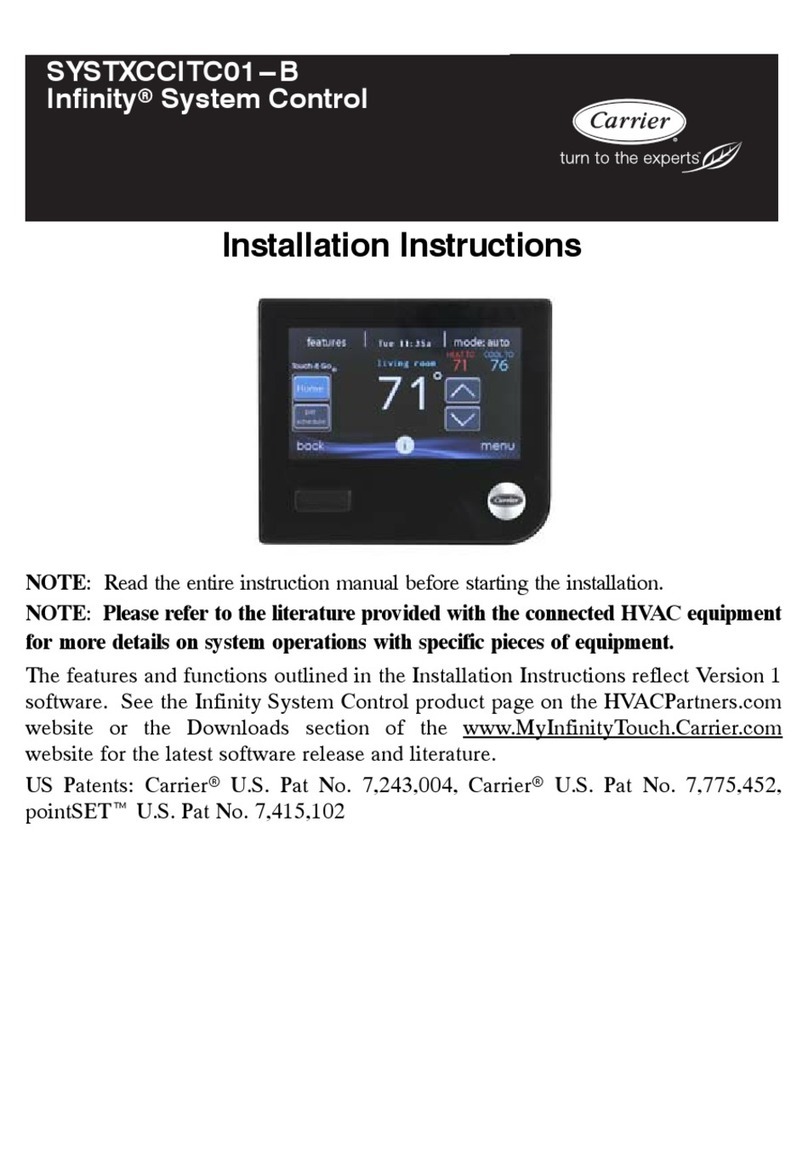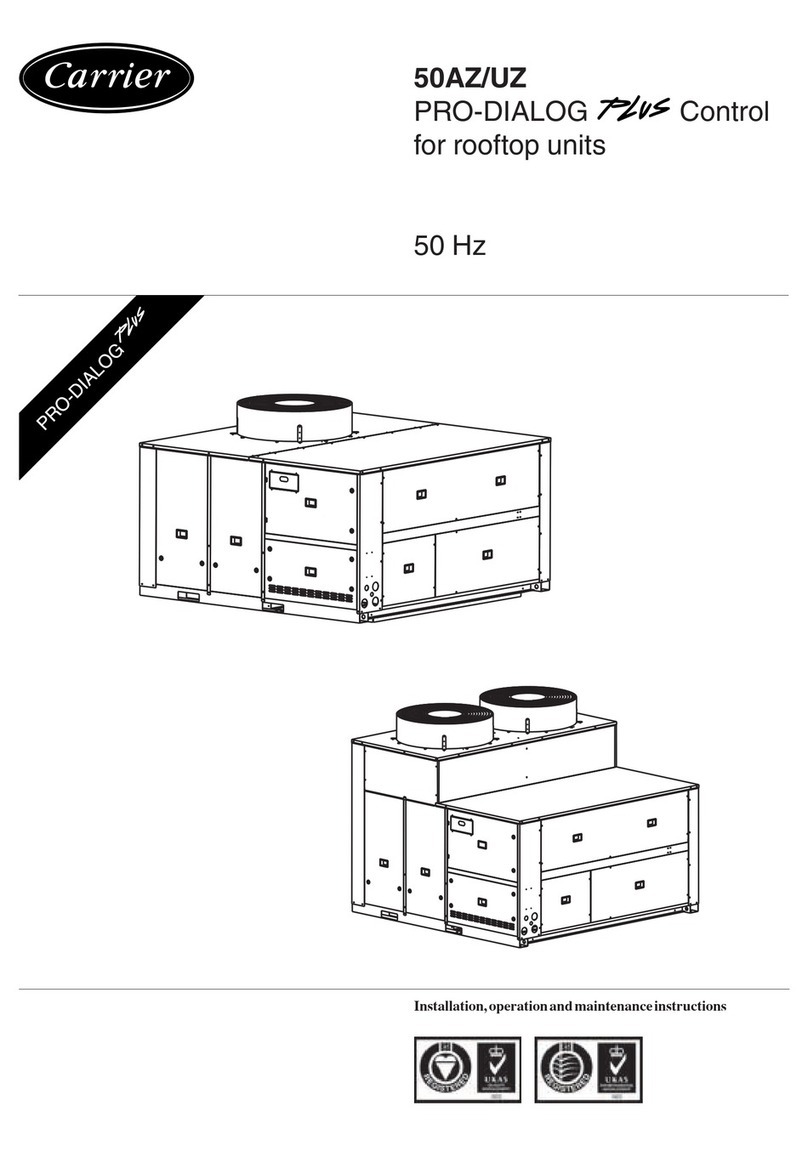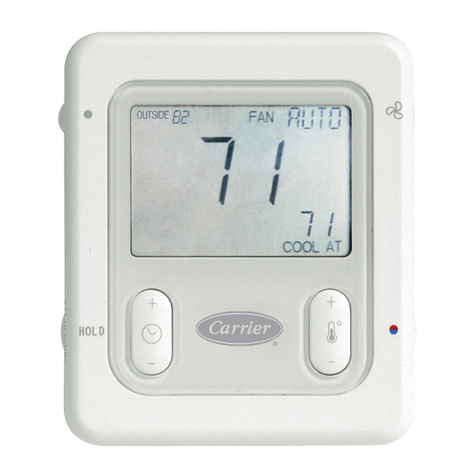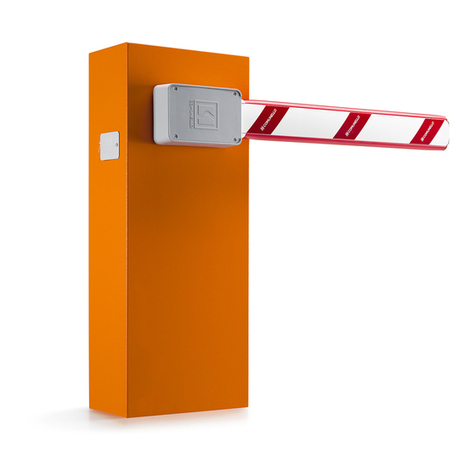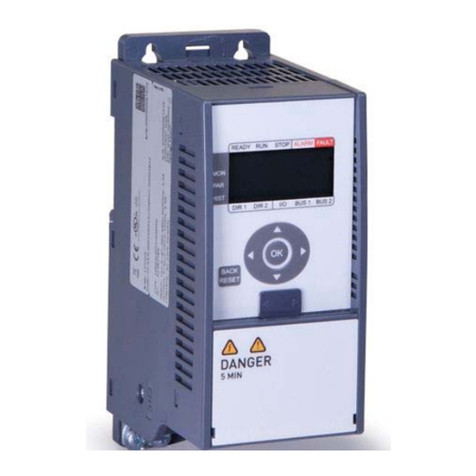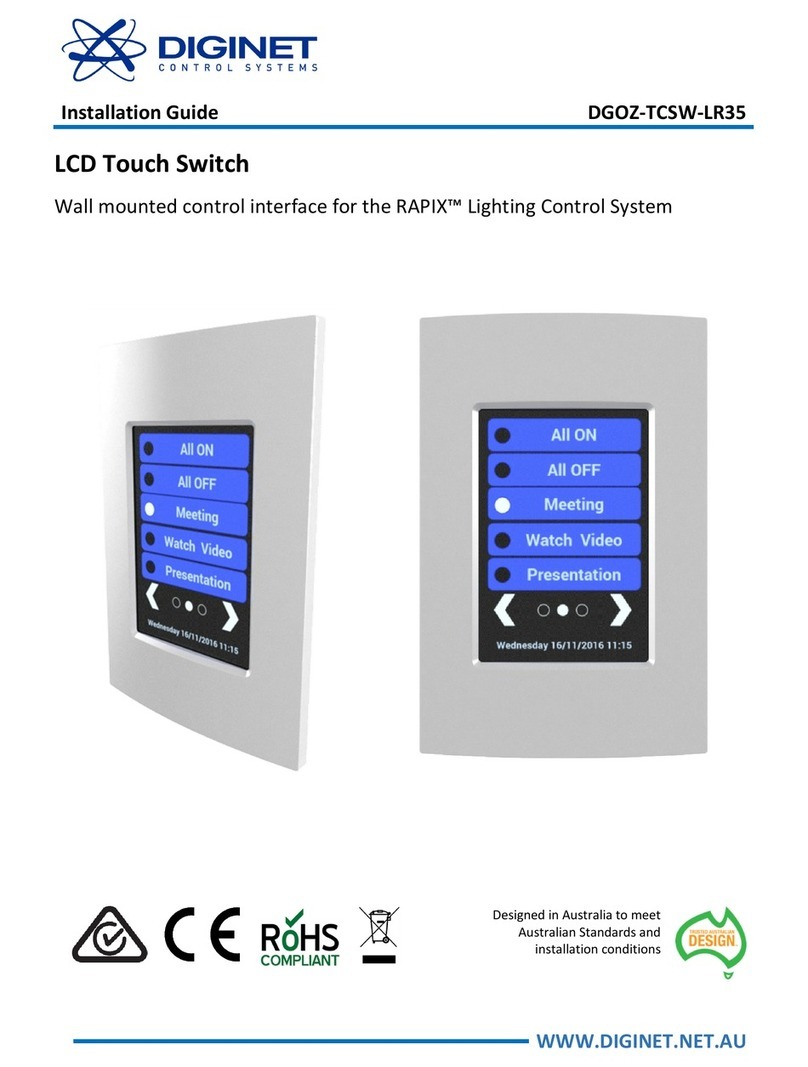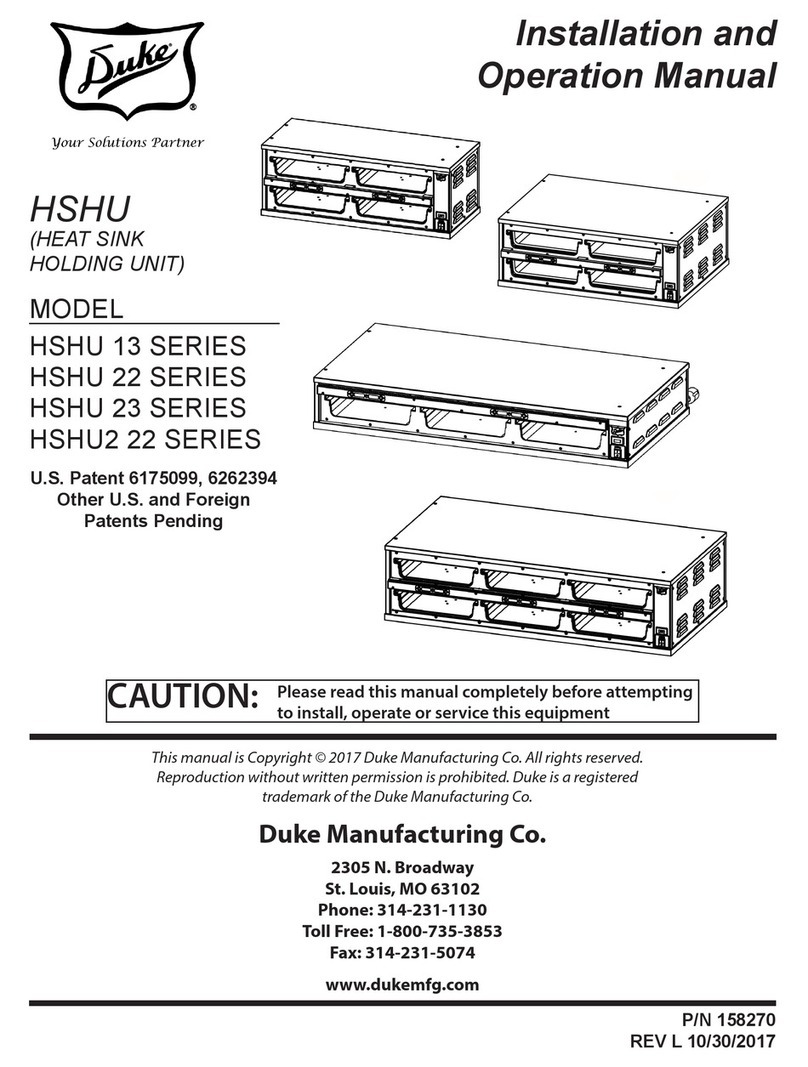
ZONEBB3Z(AC/HP)01: Quick Reference Guide
Manufacturer reserves the right to change, at any time, specifications and designs without notice and without obligations.
2
Component Location and Wiring
Considerations
Locating Bryant 3-Zone System
All wiring is connected back to the Bryant 3-Zone System. Select a
location near the furnace or fan coil where wiring from each thermostat,
each damper actuator, and the equipment itself can come together easily.
The Bryant 3-Zone System is approved for indoor use only and should
never be installed with any of its components exposed to the elements. It
may be installed in any area where the temperature remains between 32°
and 158°F, and there is no condensation. The cover must be installed to
prevent damage from other sources. Do not locate where it will be
accessible to children. Remember that wiring access is likely the most
important consideration.
Wiring Considerations
• All wiring in the Bryant 3-Zone system may be unshielded
• Ordinary thermostat wire is ideal
• Use 22 gage or larger for normal wiring
• Lengths over 100 ft should use 20 gage or larger wire
• Each damper actuator required 3 conductors
• The connection to thermostat and equipment (furnace or fan coil)
could require as many as 8 conductors for a multi-state installation
• The Leaving Air Temperature (LAT) and Heat Pump Temperature
(HPT)-(used with heat pumps only) sensors require 2 conductors each
• Cables with excess conductors are acceptable
Step 1 – Mounting the Bryant 3-Zone System
The Bryant 3-Zone System can be mounted in either vertical or
horizontal position near the HVAC system inside the home. It is
designed so that wires can enter it from behind, above, or below. Plan
wire routing before mounting.
Fig. 2 – Mounting the System
1. Remove the front cover from the base and use the base as a
template to mark drilling locations on the wall, stud , or roof truss.
2. Mount using 4 screws (and wall anchors) provided. (See Fig. 2.)
3. Level for appearance and tighten screws.
Step 2 – Install Thermostats in each desired Zone
Location
1. Install each thermostat according to the manufacturer’s instructions
in their designated Zone location.
2. Connect the thermostats wires to their respective Zone designation
on the right side of the the 3-Zone Panels. (See Fig. 3).
Step 3 – Install Zone Dampers
Each damper has 3 connections: Close (CLS), Open (OPN), and
Common (COM). Find the connection points along the lower left side
of the 3-Zone Control. Suggested colors are CLS = RED; OPN =
GREEN, COM = WHITE. Field label and make the connections at the
dampers and at the 3-Zone Control. Be careful not to cross zone
numbers.
If duct work required multiple dampers for a single zone, up to 5
dampers may be wired in parallel and may be installed in any position.
WARNING
!
ELECTRICAL SHOCK HAZARD
Failure to follow this warning could result in personal injury or death.
Turn off unit before routing control wiring or any service operation.
Remember, there may be more than one power supply to unit.
CAUTION
!
EQUIPMENT DAMAGE HAZARD
Failure to follow this caution may result in equipment damage.
To prevent possible damage to Bryant 3-Zone System, do not mount
control on plenum, duct work, or flush against furnace.

